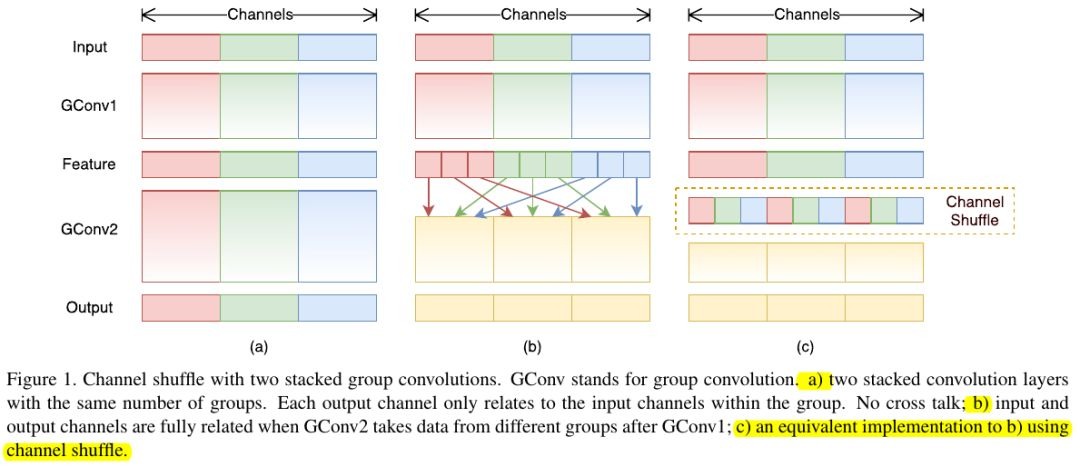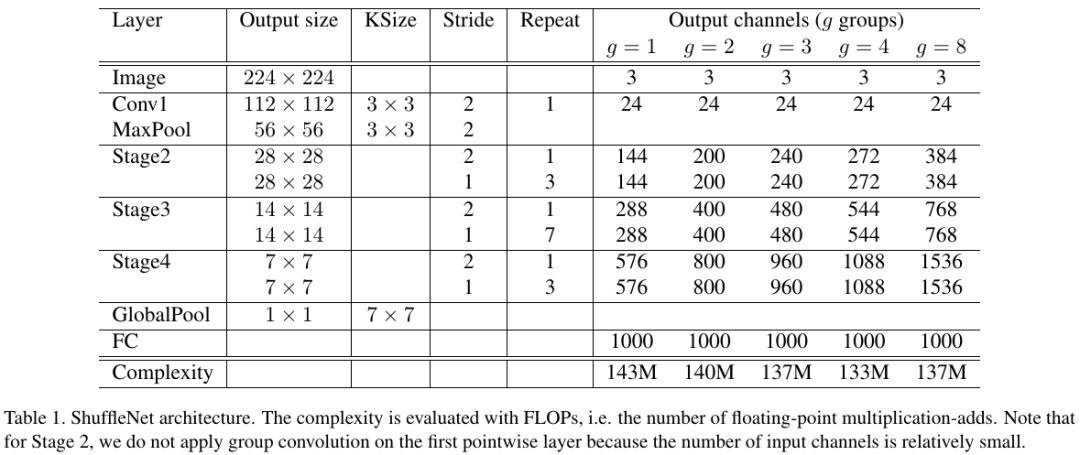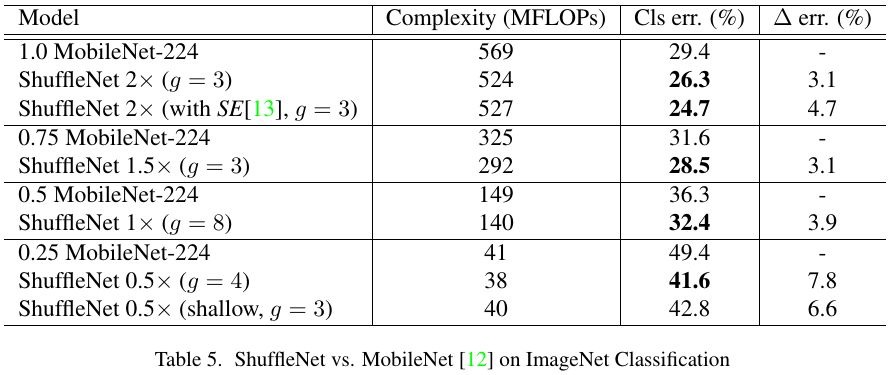Keyword [Shufflenet]
Zhang X, Zhou X, Lin M, et al. Shufflenet: An extremely efficient convolutional neural network for mobile devices[C]//Proceedings of the IEEE Conference on Computer Vision and Pattern Recognition. 2018: 6848-6856.
1. Overview
1.1. Motivation
- the limitation of computing power on mobiledevices
- costy dense 1x1 convolutions
In this paper, it proposed ShuffleNet
- pointwise group convolution
- Depthwise convolution
- channel shuffle.

(a) output from a certain channel are only derived from a small fraction of input channel. block information flow between channel group and weakens representation
1.2. Channel Shuffle
for a gn (group, number of each group) feature map
- reshape to gxn
- transpose nxg
- reshape to ng
1.3. ShuffleNet Unit

1.4. Architecture

1.5. Unit Comparison
for a point of c channels feature map, m channels of bottleneck
- ResNet. 2cm + 9mm
- ResNeXt. 2cm + 9mm/g
- ShuffleNet. 2cm/g + 9m
ShuffleNet apply group convolution to two 1x1 pointwise convolution.
1.6. Related Work
1.6.1. Model
- GoogleNet
- SqueezeNet
- SENet
- NASNet
1.6.2. Group Convolution
- AlexNet. 50% kernel on first GPU, 50% on second GPU
- ResNeXt
- Xception. depthwise
- MobileNet. depthwise
1.6.3. Channel Shuffle Operation
- cuda-convnet. random sparse convolution layer, equivalent to random channel shuffle + group Conv
1.6.4. Model Acceleration
- Pruning connection
- Channel reduction
- Quantization
- Factorization
- Implement convolution by FFT
- Distillation
- PVANET
2. Experiments
2.1. Hyperparameter

2.2. Shuffle Channel

- sx. means the scale of channel, sxs times complexity of 1x.
2.3. Comparison


- 18 times faster than AlexNet

2.4. Inference Time on Mobile Devices
- Empirically g=3 has a proper trade-off between accuracy and actual inference time
